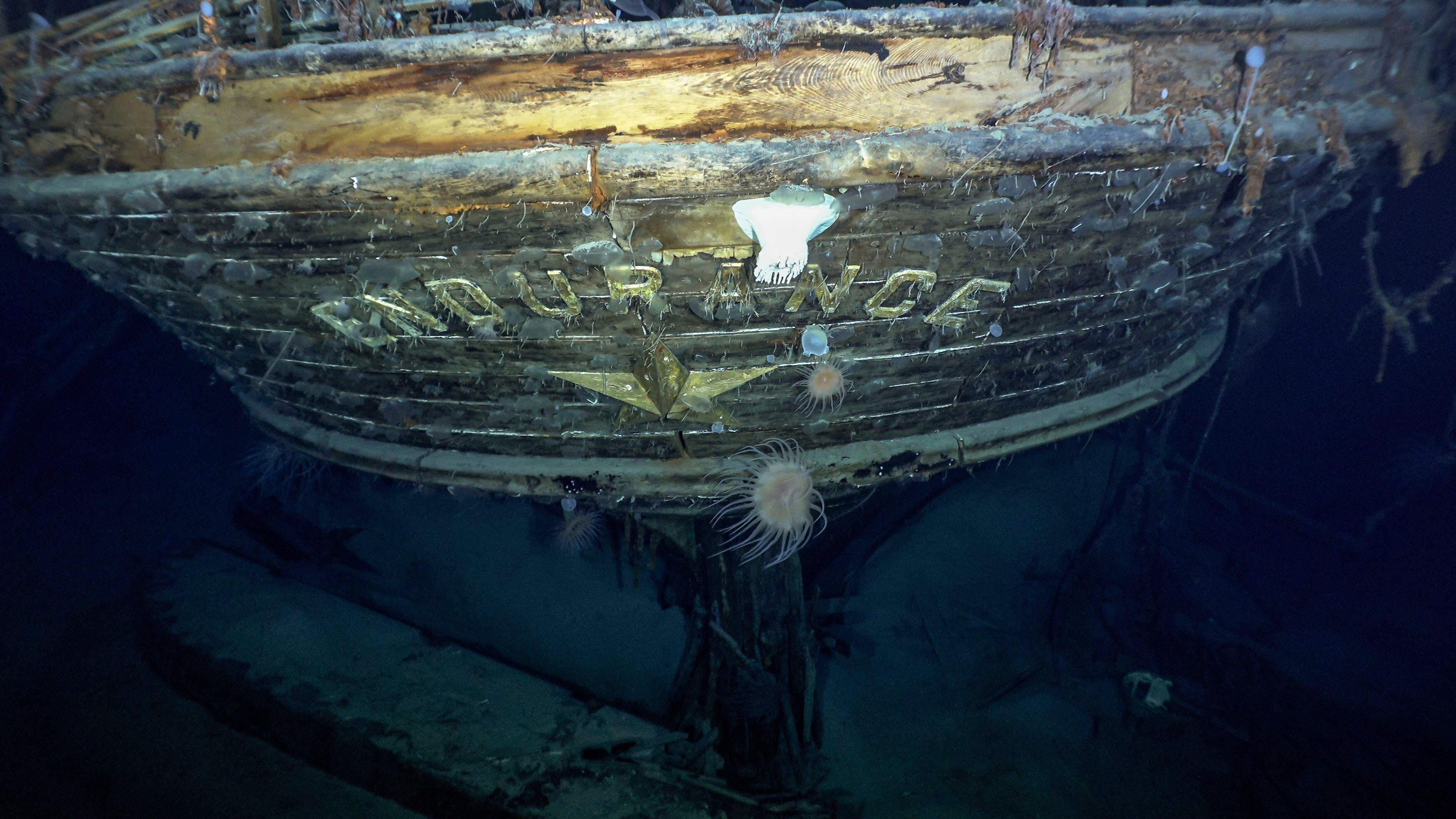The story of Endurance has a plot more gripping than any Hollywood blockbuster
Ernest Shackleton’s ship is my next project, waiting in a dust-covered box in my workshop, but little did I know that its namesake would be discovered this week – 107 years after it sank in an Antarctic sea


Your support helps us to tell the story
From reproductive rights to climate change to Big Tech, The Independent is on the ground when the story is developing. Whether it's investigating the financials of Elon Musk's pro-Trump PAC or producing our latest documentary, 'The A Word', which shines a light on the American women fighting for reproductive rights, we know how important it is to parse out the facts from the messaging.
At such a critical moment in US history, we need reporters on the ground. Your donation allows us to keep sending journalists to speak to both sides of the story.
The Independent is trusted by Americans across the entire political spectrum. And unlike many other quality news outlets, we choose not to lock Americans out of our reporting and analysis with paywalls. We believe quality journalism should be available to everyone, paid for by those who can afford it.
Your support makes all the difference.Super-fans of ships of the Heroic Age of Antarctic Exploration exist in vast numbers – I am one of them. The true stories of the unlocking of the “last unknown continent”, from the late 19th to early 20th century, are full of mystery and heroism; and one way I have found to capture the romanticism of the era is through an obsessive interest in the ships that took us there, specifically through building historically accurate wooden model boats.
Ernest Shackleton’s Endurance is my next project, waiting in a dust-covered box in my workshop, but little did I know that its namesake would be discovered this week, 107 years after it sank in an Antarctic sea.
What is the particular fascination with the era? Well, the image most often conjured up by the Heroic Age is that of haggard men in frosted beards, hauling their laden sledges into the wind. Glaciers, starvation, hope and regret – from Nansen to Mawson, Scott to Shackleton, the stories push the boundaries of human possibility, with real-life plots more gripping than any Hollywood blockbuster writer could hope to write.
Doomed or otherwise, the central figures of these stories are always the leading men; those who trudged the ice, lost the toes, ate the penguins and suffered heroically – but often cheerfully – in the most unimaginable conditions.
But to my mind, the real heroes of these stories are the ships that took them there. First and foremost, the explorers of old were sailors. Whether merchant marine like Shackleton, or Royal Navy like Scott; the first hurdle of any icy quest was simply surviving the ravages of the Southern Ocean with its Roaring Forties and biblical waves.
Nansen’s Fram, Scott’s Terra Nova and Discovery, Shackleton’s Endurance– the ships of this age are testament to the engineering miracles performed by 19th-century boat builders, and the exceptional maritime skills of their fearless crews. It is here that Shackleton’s Endurance provides us with one of the greatest stories of the age and some of the most beautiful and enduring images.
Having narrowly failed in a 1909 attempt to be the first person to reach the South Pole, Shackleton left a war-torn Europe and sailed south, hoping to be the first person to traverse the Antarctic continent. Endurance was a three-masted, 144-ft sailing ship with a steam engine, her name marked boldly on the stern above the star Polaris, her thick oak timbers and sturdy bow designed to break through pack ice. Even so, her solid construction was no match for a wintery Weddell Sea.
By 1915, the Endurance was stuck fast, trapped in the grip of a polar ice pack described by Shackleton as “a gigantic and interminable jigsaw-puzzle”. Creaking and groaning, the plucky little sailing ship held her ground, sustaining her crew through a deadly Antarctic winter.
Thanks to Frank Hurley’s extraordinary photographs, never has a dying ship looked so beautiful. His famous images show a crystal ghost ship, her frosted rigging shining on a wide black sky. In one far-off view – no small distance for Hurley to haul his camera – Endurance looks afloat on a choppy sea, trapped in exquisite waves of ice, the shot framed by sloping dunes of snow.
Then, in the spring, the ice began to shift. Surrounded by huge pressure ridges – enormous blocks of ice that rise up between meeting floes – Shackleton’s lifeline stood no chance. At the mercy of an unimaginable weight on all sides, she was crushed and broken, surviving long enough for her crew to salvage what they could, before slipping, headfirst, to her doom.
What followed was a human survival story so incredible that it hardly seems possible; a feat of navigation, seafaring and man-management that Shackleton – a man who failed in his two most significant Antarctic missions – has long been seen as the high benchmark for effective decision-making and leadership.
The non-human hero of the story, Endurance, slipped away beneath the ocean, while afficionados of the age were left with a treasure trove of material in Hurley’s gorgeous images, thrilling first-hand accounts by the key protagonists and many outstanding biographies and exhibitions.
To keep up to speed with all the latest opinions and comment sign up to our free weekly Voices Dispatches newsletter by clicking here
This morning, however, came news of another great discovery – Endurance22, an expedition led by geographer Dr John Shears to locate its namesake hit the jackpot three kilometres down, roughly four nautical miles south of her sinking. The murderously cold sea has been a friend to its victim; striking images show a ship so eerily well-preserved they could be almost be transposed onto Hurley’s photographs.
Mensun Bound, the expedition’s director of exploration, said the ship was “by far the finest wooden shipwreck I have ever seen… upright, well proud of the seabed, intact, and in a brilliant state of preservation.”
“This is a milestone in polar history,” he added. The site has been declared an historic monument, a fitting addition to the perfectly-preserved huts of the explorers who trekked the ice.
Super-fans of ships like these (like myself) could have initially felt pangs of regret that so stunning a story, so well-told, might be marred by the rotting reality of murky depths. Then I saw the images. Crystal clear, they show a ship in suspended animation, the near-freezing temperatures and lack of wood-eating organisms preserving her finest features in astonishing detail.
Wheels, dead-eyes, the port-hole to Shackleton’s cabin, all just as we know them from Hurley’s photographs, the ship’s name still perfectly stamped above the Polaris star. Far from dulling a near-perfect survival story, the discovery has breathed new life into Hurley’s images and, for me at least, reignited a passion for the heroics of this extraordinary age.
And so for now, I’ll build my own tiny version of Endurance with gusto, helped in the detail by these new images from a far-away watery resting place. It will be followed by my first real boat-build, a 10-foot sailing dinghy I’ll be constructing by hand in my garage and which I hope to launch on our local reservoir in the autumn in more temperate conditions than the likes of Shackleton encountered.
When I set sail, I’ll be channelling the spirit of Endurance, but mainly hoping my dinghy will stay afloat.
Join our commenting forum
Join thought-provoking conversations, follow other Independent readers and see their replies
Comments